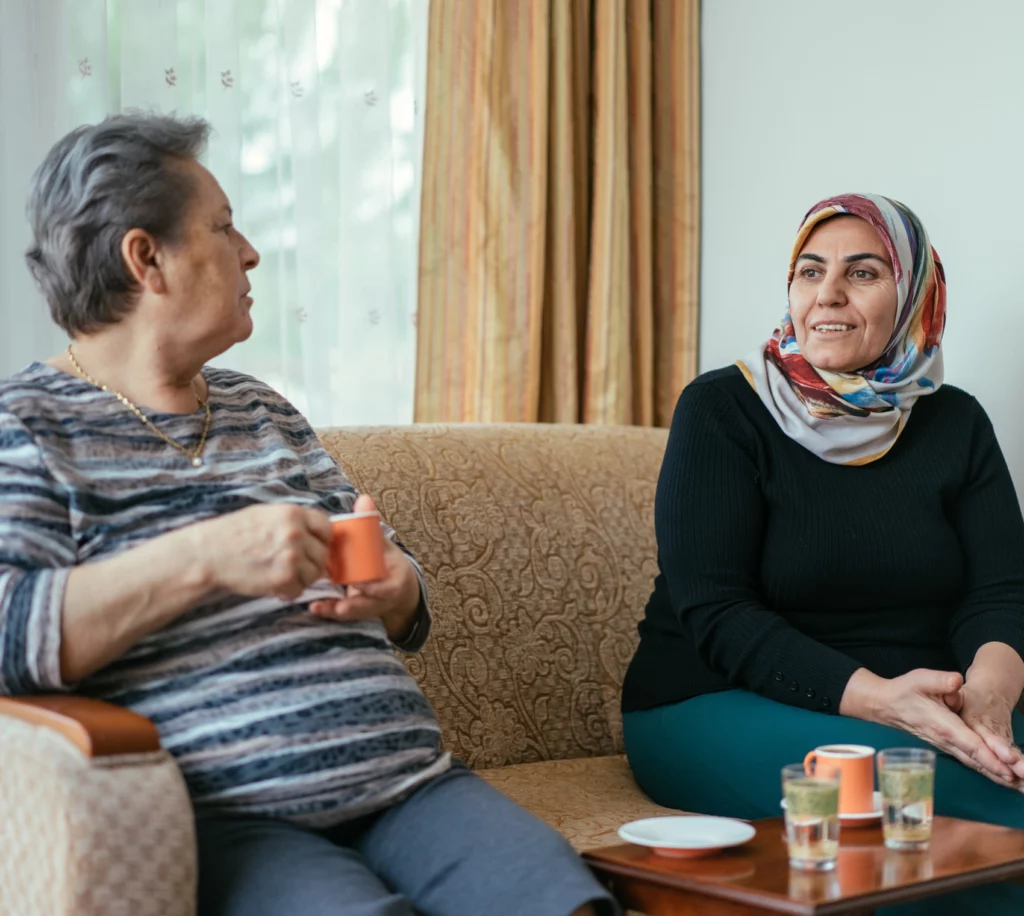Pathlights’ Shared Housing Program Gives Older Adults A Taste of College Life
Having roommates can benefit seniors financially, socially and in safety
Palos Heights, IL – With the assessment fees climbing on her two-bed, two bath condominium in the southwest suburbs, 70-year-old widow Marge Smith (not her real name) realized she and her dog Pooch could lose their home. Smith just couldn’t see a way to make her finances work to stay in the condo – or even sell her condo and stay within the community that has been her home for decades. Smith turned to Pathlights to explore their Shared Housing Program to find a roommate.
While this may feel uncomfortable to younger generations, older Boomers are well-acquainted with the idea of sharing housing. Valerie Ross, Housing Specialist with Pathlights, says, “Older adults are accustomed to the idea of a boarder. Having a boarder in your own home – or being a boarder yourself – was very common. My own family, for instance, lived in the back of a butcher shop. It wasn’t abnormal. In some countries, it’s still very mainstream to have or be a boarder.”
As housing prices have escalated dramatically in the past decade, Ross notes that this phenomenon has hit one sector of the population very hard; seniors are rapidly becoming the new face of homelessness. It’s estimated that 5 million people over the age of 65 live in poverty. “A lot of older adults don’t make a lot of money, about $1,200 or less each month. Perhaps you’ve just been getting by and suddenly, your landlord sells your apartment building and the new buyer doubles the rent. Many seniors can become homeless in an instant. With average rent about $1,702 a month, putting together three months’ rent on a fixed, small income to move into a new place is an impossible stretch,” says Ross.
Pathlights has been assisting older adults in Palos, Lemont, Orland, and Worth townships find and share housing for about 30 years. Their service area has now expanded to include Bremen and Rich townships.
“Our services don’t cost anything, for either the provider or the seeker,” says Ross. “Pathlights has built such a strong foundation and reputation in this service. This area has not seen any real commitment to building affordable housing in decades, so shared housing is a way to provide safe, affordable housing for older adults.”
Ross notes that many seekers, the people looking for a home, are seeking shared housing as they wait for family to be able to take them in or for a housing voucher. “We have providers, the people with homes to share, who have hosted a succession of roommates over the years. Not only does it help both parties financially, it also provides companionship.”
Having someone living in your extra bedroom helps stave off social isolation, Ross says. “Loneliness is an epidemic among older adults. There is a stability to life when you know someone else is in your home. You’re creating a little household. If something happens to you, someone is there. Even if they both happen to be busy, and don’t talk much during the day, they feel better just knowing someone is there. It can be a lot like having a roommate in college. Some roommates become very good friends. There are now two fewer people feeling alone and unsafe.”
Ross and Pathlights are vigilant about pairing providers and seekers. “We vet people as thoroughly as possible,” Ross says. “Proof of income and a current, legal ID is required. We also ask for four references and check those thoroughly. Then we get into personality matches. We never force matches. There really is no typical match as everyone is looking for something different. We ask about smoking, pets, look for similarities and differences.” Ross smiles, “I have one gentleman provider who does all the cooking and all the laundry, and that has to be okay with his roommate.”
“Honesty is the most important thing,” says Ross. “Both parties have to be open in what they want from a roommate, honest about smoking, or their feelings about alcohol.”
“We then have the seeker and provider meet at the home. The provider gives the seeker a tour of the living space and then they talk to get to know one another. The seeker and provider both have about 48 hours to decide if they will be roommates – they have to both agree that they can live together – and then we put together a shared housing agreement.”
Ross sees real possibilities in intergenerational matches. “As long as one roommate is at least 62 and/or on Social Security Disability Insurance, the other roommate can be any age over 18. A good match can happen with any ages.”
A match was made for Marge Smith and it couldn’t be more perfect. Ross introduced Smith and Pooch to Jane Johnson (not her real name), who recently lost her apartment due to a spike in rent, and suffered the loss of her own dog at about the same time. “This has worked out wonderfully,” says Ross. “Marge gets to stay in her home that she loves, in the community that she loves. Jane is able to enjoy the companionship of a dog again, has her own bedroom and bathroom and also stays within her community. They can afford all this together, but could not do it alone.”
###################


